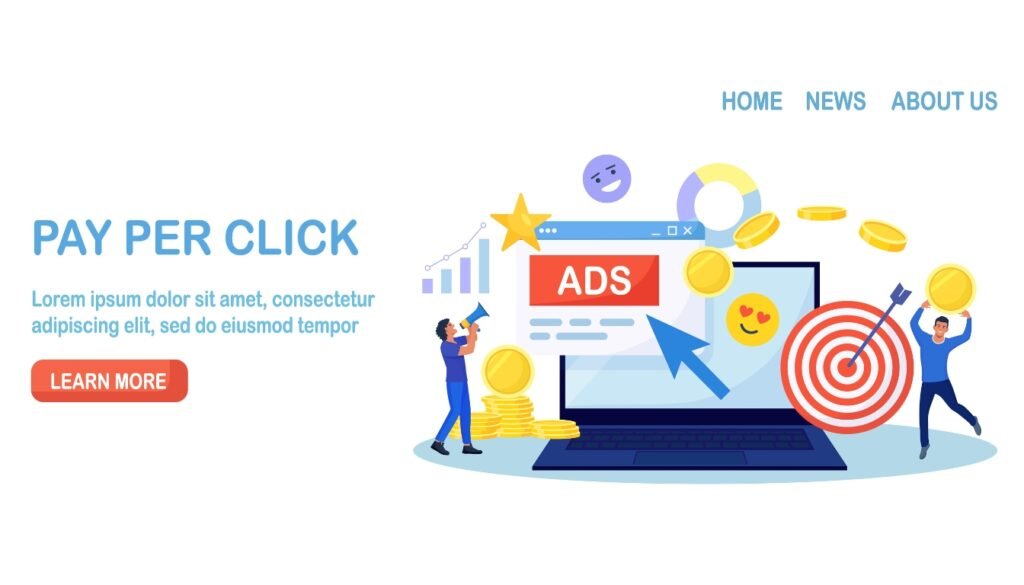Affiliate Disclaimer: Some of the links on this site are 'affiliate links.' This means if you click on the link and purchase the item, we may receive an affiliate commission.
Affiliate marketing is one of the simplest ways to start earning online without a hefty upfront investment. For beginners, it’s a winning combination of low startup costs and the flexibility to work at your own pace. At its core, affiliate marketing is all about connecting people with products or services they’ll love—and getting rewarded for it. Whether you’re a budding blogger, a social media enthusiast, or just curious about making passive income, this guide will help you take your first confident step toward building a sustainable online revenue stream.
Key Takeaways
- Affiliate marketing lets you earn by promoting products or services and earning a commission for sales.
- Start by choosing a niche you care about—it’s easier to share things you genuinely believe in.
- Partner with trusted affiliate programs or networks, like Amazon Associates or ClickBank, to find products to promote.
- Build a website or blog to create valuable content that informs and helps your audience.
- Focus on SEO to make it easier for others to discover your content online.
- Be honest with your audience about using affiliate links—trust goes a long way.
- Social media and email marketing can help you expand your reach and connect with more people.
- Learning analytics will help you understand what’s working and where to improve.
- Success takes time—stick with it, and stay consistent in your efforts.
What is Affiliate Marketing and How Does it Work?
Affiliate marketing is like being the middleman who connects someone with exactly what they need while earning a reward for the effort. Simply put, it’s a partnership between individuals or companies where one promotes a product or service, and the other benefits from the exposure. Whether it’s a favorite book, handy tool, or life-changing app, affiliates play a crucial role in driving sales. But how does this ecosystem work, and who plays which role? Let’s break it down.
Understanding the Affiliate Marketing Ecosystem
Affiliate marketing thrives because three key players come together in a mutually beneficial way: sellers, affiliates, and consumers. Once you understand their roles, the process becomes as clear as day.
- Sellers: These are the creators or distributors of products and services. They could be small Etsy shop owners, large retailers, or even individuals offering coaching services. Sellers might not actively promote their products—this is where affiliates step in. For instance, Amazon’s Affiliate Program connects sellers with affiliates to market their products.
- Affiliates: Also known as publishers, affiliates are people or businesses who promote the seller’s products. They do this through blogs, social media, YouTube videos, or paid ads. If they succeed in convincing consumers and driving a purchase through their unique affiliate link, they earn a commission.
- Consumers: These make the whole system work. Consumers go from learning about the product via the affiliate to purchasing directly from the seller. They’re unaware of the backend affiliate structure, except for the occasional transparent disclosure, which is often legally required.
Imagine you’re an artist. The seller provides the canvas, the buyer acquires the artwork, but you—the affiliate—blend the paints to make something extraordinary that grabs attention.
Different Types of Affiliate Marketing Models
There isn’t a one-size-fits-all in the affiliate world. Various payment systems exist, allowing sellers and affiliates to work together based on their preferences and goals. Let’s go through some of the most common models:

- Pay-Per-Sale (PPS): Affiliates earn a commission for every sale they help close. It’s the classic setup used by most programs like the Shopify Affiliate Program.
- Pay-Per-Lead (PPL): In this setup, affiliates are rewarded when consumers take specific actions, like signing up for a newsletter or filling out a form. PPL is common in industries requiring lead generation, such as real estate or insurance.
- Pay-Per-Click (PPC): Here, affiliates earn based on the number of clicks they generate on their unique links. This model helps drive traffic to a seller’s website, even if the consumer doesn’t make a purchase.
- Pay-Per-Install (PPI): Best suited for software and apps, PPI rewards affiliates for every successful download or installation originating from their efforts. For instance, tech-savvy affiliates often use this model in promoting mobile apps or SaaS products.
If these models feel a bit unexpected, think of it like ordering coffee—some prefer clicks (espresso shots of traffic), while others go for leads or purchases (the full latte).
Affiliates: Who Can Become One?
You might be wondering, “Can I really become an affiliate too?” Short answer: yes! The beauty of affiliate marketing is its accessibility. Many successful affiliates started with little more than a passion for their niche and a knack for sharing what they love.
- Bloggers: Blogging is one of the most popular channels for affiliates. As a writer, you can naturally weave affiliate links into helpful or entertaining content. For example, a fitness blogger could review their favorite yoga mats and include an affiliate link to purchase.
- Social Media Influencers: Whether you’ve got 10k Instagram followers or are TikToking your way to fame, your audience trusts what you share. Influencers commonly partner with brands through affiliate programs.
- Niche Experts: If you know your stuff in a specific area—be it skincare, gaming gear, or finance—affiliate marketing can work wonders. Your expertise gives you credibility, making it easier to convince your audience.
Here’s the takeaway: To succeed, you don’t necessarily need a huge audience. What matters is that you can connect with people and build trust. After all, affiliate marketing is less about selling and more about helping people make informed choices.
Choosing Your Niche: Why It Matters
Selecting the right niche might feel like choosing a needle from a haystack, but it’s the foundation of a successful affiliate marketing venture. Your niche is a topic where your expertise, passions, and audience overlap. Pick the wrong one, and you’ll end up spinning your wheels without results. Get it right, and you’ll be reaching the right people with products they’re already searching for. But how do you make the best choice? Let’s find out.

How to Identify Profitable Niches
Finding a profitable niche starts with understanding the balance between demand and competition, and seeing where affiliate opportunities exist. Think of it this way: your niche should be like a small stream that gets enough water flow (demand) while avoiding too many fishermen (competitors).
Here’s how to assess potential niches:
- Research industry demand: Check what’s trending and what products solve real-world problems. For example, niches like health and wellness or personal finance are consistently high-demand areas. Tools like Google Trends can show you what consumers are searching for.
- Gauge the competition: Don’t jump into hot markets without understanding who you’re up against. Competitive analysis tools like Ahrefs can help you identify keywords popular affiliate sites target, such as “best” or “review.”
- Explore affiliate programs: Not all niches offer an abundance of affiliate programs. Some, like technology and SaaS, provide incredible earning opportunities with programs offering recurring commissions.
- Focus on your passions: Are you into fitness, skincare, or photography? Marketing something you’re passionate about adds authenticity. Your excitement will shine through, making it easier to connect with your audience.
Think of profitable niches as the perfect blend of three streams merging into one: your curiosity, audience demand, and strong affiliate programs.
Avoiding Overly Saturated Niches
New affiliate marketers should tread carefully when stepping into highly competitive waters. Why? Oversaturated niches often have big players dominating search results, leaving little room for newcomers to make a dent.
Here are tips to avoid biting off more than you can chew:
- Steer clear of broad audiences: Niches like “tech gadgets” might be too general. Instead, narrow it down to “portable chargers for travelers.” Niches with unique angles give you a chance to shine. This article lists ideas that are profitable but less crowded.
- Seek untapped opportunities: Look for micro-niches or groups that are underserved. For instance, rather than starting with “yoga,” you might explore “yoga for seniors” or “yoga mats for travel.” These niches often face less competition while still addressing targeted needs. For inspiration, check this Quora discussion to see possible gaps.
- Follow your audience’s problems: People search for answers to their issues, so focus on niches that solve specific problems. If gadgets are your thing, maybe explore “eco-friendly tech accessories” instead of covering all electronics.
Remember, affiliate marketing rewards those who think strategically. Avoid the overly packed swimming pools—find a quiet stream and start fishing there.
Setting Up Your Affiliate Marketing Platform
Building your affiliate marketing platform is like crafting the foundation of a house—it needs to be structured, appealing, and functional to truly succeed. Whether you’re starting with a blog, harnessing the power of social media, or exploring niche microsites, each approach brings unique opportunities to grow your affiliate ventures.
Building a High-Converting Website or Blog
A website or blog is often the backbone of affiliate marketing. Think of it as your digital storefront; it’s where potential customers get to know you, trust your recommendations, and ultimately convert into buyers. But what makes a website high-converting? Here’s where to start:

- Choose a Memorable Domain Name: Aim for something short, relevant to your niche, and easy to spell. Tools like Namecheap can help you find available domains.
- SEO Optimization is Non-Negotiable: Incorporate targeted keywords within headlines, URLs, and content. Don’t be tempted to simply stuff keywords into your content. Instead, make them seamless and relevant. For instance, a fitness blog promoting yoga accessories could optimize for terms like “best yoga mats for beginners.”
- Prioritize Content That Engages: Your content should answer questions, solve problems, or entertain in a way that hooks your audience. Life hacks, tutorials, and product comparisons often work wonders. Platforms like this one offer insights into crafting compelling affiliate sites.
Finally, always remember to make navigating your site a breeze—because a clunky layout is like a maze that customers would rather avoid.
Leveraging Social Media Channels for Affiliate Marketing
Social media is where your audience already hangs out, making platforms like Instagram, TikTok, and YouTube ideal for affiliate marketing. But how can you tap into these channels effectively?

- Instagram: This is your go-to for visually-driven content. Share candid photos, carousel product reviews, or even before-and-after shots of products to engage your audience. Use Instagram Stories and include tappable affiliate links (where applicable).
- TikTok: Short, snappy videos are the way to go. Whether it’s unboxing your favorite products or giving quick tips, authenticity is key. TikTok rewards relatable and creative content, so don’t hesitate to showcase your personal touch.
- YouTube: Long-form videos hold power for thorough product reviews or tutorials. Use the description box liberally to share affiliate links—but be upfront with a disclaimer. Transparency breeds trust and boosts conversions.
For a detailed playbook on using social media for affiliate success, check out this social media guide.
Exploring the Potential of Microsites
Microsites are like secret weapons in affiliate marketing. Picture them as highly targeted, campaign-specific mini websites designed to captivate niche audiences. But why are they so effective?
- Laser-Focused Content: Unlike wider blogs or brand sites, microsites speak directly to a specific audience. If you’re promoting eco-friendly gadgets, your microsite can zero in on “sustainable kitchen tools” with content tailored to environmentally-conscious shoppers.
- Boosted Conversion Rates: These focused environments create fewer distractions, making it easier for visitors to take action. A microsite can feel like a direct conversation, guiding users toward a single call-to-action.
- SEO Advantages: Microsites can also help you dominate long-tail keywords, which are less competitive but can drive significant search traffic. For example, if you’re an affiliate for outdoor gear, a microsite focused solely on “waterproof hiking backpacks” can climb the rankings faster.
Want to create a winning microsite? This comprehensive guide offers excellent starting points.
When used strategically, microsites can be the difference between hitting conversion goals and exceeding them. It’s like having a focused tool in your kit, honed for precision and results.
Finding the Right Affiliate Programs and Networks
Starting with affiliate marketing is about having a platform and finding the right partners to team up with. Choosing the right affiliate programs and networks can make or break your efforts, impacting both your earnings and your credibility. With so many options out there, narrowing down your choices might feel overwhelming. But don’t worry, I’ll guide you on how to evaluate commission structures and explore tools that simplify managing your campaigns.
Evaluating Commission Structures
When it comes to affiliate marketing, you should always understand how you’re getting paid—because commissions are the foundation of your income. Not all programs operate the same way, so here’s a breakdown of key commission models to keep on your radar:

- CPA (Cost-Per-Acquisition): With CPA, you earn a set amount of commission when your referral completes a desired action (like purchasing a product or signing up for a service). It’s ideal for affiliates targeting high-conversion niches.
- EPC (Earnings-Per-Click): EPC gives you a clear picture of the potential profitability of a program. It reflects the average earnings per 100 clicks an affiliate can expect. Higher EPC values suggest well-converting products, which means better returns on your efforts. Want to dig deeper? Read this comprehensive guide on EPC for insights.
- Recurring Commissions: Instead of a one-time payout, some programs offer recurring income for as long as your referral stays subscribed. Think subscription services like SaaS tools or membership sites. If passive, long-term income is your goal, prioritize these programs.
To maximize your earning potential, compare options and be selective. Platforms like Partnerize offer valuable tips to align commission structures with your goals.
Tools for Managing Affiliate Links and Campaigns
Managing your affiliate links and campaigns doesn’t have to feel chaotic. With the right tools, you can track, optimize, and scale effortlessly. Below are some must-have tools for affiliate marketers:

- Affiliate Link Generators: Tools like Pretty Links or ThirstyAffiliates let you turn long affiliate URLs into clean, branded links. It not only keeps your content visually appealing but also makes tracking easier.
- Analytics and Tracking Tools: Understanding where your clicks and conversions come from is key to optimizing your strategies. Popular options like Google Analytics or Refersion provide in-depth data on your link performance.
- Campaign Management Platforms: For affiliates working on multiple campaigns, platforms like ShareASale or ClickBank act as centralized hubs. These networks connect you with merchants, helping you browse products, monitor earnings, and stay organized.
- Heatmaps and Testing Tools: Visual tools like Crazy Egg can help you analyze how users interact with your site, allowing you to refine your call-to-actions and link placements for better results.
Using these tools is like having an extra pair of hands—making your workload lighter while ensuring top-notch performance.
By focusing on programs with transparent commission structures and equipping yourself with effective tools, you’ll set a solid foundation for affiliate marketing success. With the right strategies in place, each click and conversion will work harder for your bottom line!
Strategies to Maximize Affiliate Income
Maximizing your affiliate income isn’t based on luck. You have to apply smart strategies consistently. The path to growth starts with earning your audience’s trust and finding the right tools to spread your message. Whether it’s through crafting compelling reviews, building focused email campaigns, or fine-tuning SEO and advertising, these strategic steps can make a big difference in your results.
Creating Trustworthy Review and Comparison Content
Your audience values honesty. When you share reviews and comparisons, your goal is to inform—not just to sell. Think of yourself as the helpful friend who gives advice, not the pushy salesperson.

Here’s how you can create content that resonates:
- Be Transparent: Start with your genuine experience. If you’ve used the product, share its pros, cons, and any quirks. Transparency builds trust and long-term loyalty.
- Compare Thoughtfully: Comparisons should focus on the “why” behind a recommendation. Why is one product better for specific needs or preferences? For instance, a review comparing budget laptops for students will feel tailored and useful for your audience.
- Put Honesty First: If a product isn’t perfect, admit it. Highlighting areas for improvement shows you’re unbiased. Readers can tell when content feels authentic, and they’ll trust you more when you’re honest. Need tips on nailing your reviews? This guide on creating effective reviews for affiliate marketing is a great helper.
When done right, reviews and comparisons become an “open book” that your readers will come back to every time they need advice.
Using Email Marketing for Affiliate Campaigns
Don’t underestimate the power of the inbox! Email marketing connects you directly with your most engaged audience. These are the people who trust your recommendations enough to invite you into their email space.

How can you make the most of it?
- Build a Clean List: Start by collecting emails from your website visitors or social media followers. Use opt-ins like free guides or discounts to encourage signups.
- Segment Your Audience: Not everyone on your list has the same needs. By segmenting—whether by interests, purchasing behavior, or location—you can deliver highly relevant messages.
- Send Value-Packed Emails: Don’t spam your audience with constant product pitches. Instead, mix in useful tips, resources, or personal stories. Emails, when done right, produce results. This email marketing strategy guide is packed with actionable ideas.
- Use Clear CTAs: Each email should have one main call-to-action (CTA). Whether it’s “Read the full review” or “Grab the deal now,” keep it simple and direct.
Email marketing is like nurturing a relationship—listen, engage, and only recommend what genuinely benefits your readers.
SEO and Paid Advertising Techniques
When it comes to driving traffic to your affiliate campaigns, SEO and paid advertising are like two sides of the same coin. They complement each other beautifully when used together, but let’s tackle them individually.
The SEO Boost
Search engines love quality content, and so does your audience. To get your affiliate site ranking:
- Keyword Research is Key: Focus on long-tail keywords relevant to your niche. These are less competitive and attract readers with specific needs. For beginner tips, check out this SEO guide for affiliate marketers.
- Optimize for Mobile Devices: Today’s users are often browsing from their phones. Ensure your site loads quickly and looks great on small screens.
- Create Evergreen Content: Write evergreen blog posts, such as “The Best Budget Cameras of 2025,” that stay relevant over time and continue to draw traffic.
The Paid Side: PPC Campaigns
If SEO is like planting seeds for long-term growth, paid advertising is your instant pick-me-up. Here’s how to make it work:
- Set a Budget: Start small. Platforms like Google Ads or Facebook Ads let you control your costs, ensuring you only spend what you’re willing to risk.
- Target Your Audience: PPC campaigns allow you to narrow down your audience by location, age, or interests. This precision ensures your affiliate links land in front of people most likely to click.
- Track Conversions: Platforms provide tracking tools to measure which ads bring in the most traffic and revenue.
By combining organic SEO strategies with targeted PPC campaigns, you can create a steady stream of visitors—and potential buyers—to your affiliate content. For practical tips, this SEO and PPC pairing article lays out a solid roadmap for affiliates.
By using these strategies, you’re building a system that not only generates clicks but also fosters trust and deeper engagement. Each tactic adds another layer to your affiliate marketing efforts making your approach smarter and more sustainable.
Compliance and Ethical Considerations
Affiliate marketing can be an incredibly rewarding venture, but with great power comes great responsibility. Being transparent and ethical benefits your audience and builds your credibility as a trusted affiliate. Let’s look into the guidelines you’ll want to keep in mind as you get started on the right foot.
Disclosure Requirements for Affiliates
“As an affiliate, I may earn a commission if you buy through these links”
Example Disclosure
Did you know that failing to disclose your affiliate partnerships could land you in hot water? The Federal Trade Commission (FTC) mandates that affiliates disclose their relationships with merchants in a clear and noticeable way. Why? It ensures your audience knows about your financial connection to the products or services you promote.
Here are some key pointers to help you stay compliant:
- Keep it Simple: Avoid vague statements. Phrases like “This post contains affiliate links” or “As an affiliate, I may earn a commission if you buy through these links” work perfectly. This FTC Disclosure Guide provides practical tips for crafting clear disclosures.
- Placement is Everything: Your disclosure should be easy to spot. Place it where readers will naturally see it, such as at the start of a blog post, in video descriptions, or directly on social media posts. Tucking it away at the bottom of the page? That won’t cut it.
- Match the Medium: If you’re creating content for platforms like Instagram or TikTok, write your disclosures in the same tone as your content. For example, a quick “#ad” or “affiliate partnership” tag within your caption works well. Learn more from this definitive FTC guide.
Remember, transparency isn’t optional—it’s the foundation of ethical marketing. Plus, your audience will appreciate your honesty. After all, wouldn’t you want the heads-up if someone recommended a product they were profiting from?
Building Credibility and Long-term Relationships
Gaining your audience’s trust is like planting a tree—it takes time, care, and consistency. But once it grows, the fruits of credibility will keep your marketing flourishing for years to come. Here’s why fostering genuine relationships and prioritizing honesty matters.
Why Ethical Practices Matter
When you recommend products, think of yourself as a friend offering advice. Would a friend hype up a product they’ve never tried or didn’t genuinely like? Probably not. Authenticity is key to connecting with your audience on a deeper level. By choosing to only recommend products you believe in, you send a strong message: “I’ve got your back.”
- Be Honest in Reviews: Sugarcoating isn’t fooling anyone. If a product has flaws, mention them alongside its strengths. Balanced reviews feel real, and your audience will respect you for it. For tips on maintaining integrity, check out building trust with ethical marketing.
- Choose Quality Over Quantity: It’s tempting to join every affiliate program under the sun, but this could dilute your brand. Instead, focus on products that align with your niche and offer real value. As this article on credibility in affiliate marketing explains, a narrower—but genuine—focus builds trust faster.
The Secret to Long-term Success
Trust isn’t built overnight, and neither are lifelong audience relationships. But by treating your recommendations as more than just transactions, you’ll solidify relationships that last.
- Engage with Authenticity: Reply to comments, answer questions, and offer additional recommendations—even if they don’t come with an affiliate link. This shows your audience you’re in it to help, not just make a quick buck.
- Stay Consistent: Regularly update your content to ensure your advice stays relevant and accurate. People notice when someone takes the extra step to keep things fresh.
- Leverage Credibility as a Tool: Having an authentic voice makes you a trusted resource. People love turning to someone they can rely on and will return to your content again and again. See how affiliate relationships thrive in this how-to on building trust and credibility.
By focusing on honesty, authenticity, and transparency, you’ll comply with FTC rules and find yourself at the heart of a loyal, engaged audience. Isn’t that worth the effort?
Final Thoughts
Getting started in affiliate marketing is an exciting adventure, and the potential it holds for generating steady, flexible income is unmatched. By understanding the key players, choosing a strategic niche, and building trust with your audience, you set yourself up for long-term success. The most effective affiliates invest in authentic relationships and prioritize value over quick wins.
If you’re ready to begin, take small, consistent steps—whether it’s launching a niche blog, exploring social media platforms, or joining your first affiliate program. Remember, success in affiliate marketing doesn’t start with perfection. It’s a learning process that requires staying committed to creating value.
What’s stopping you from taking that first step today?

